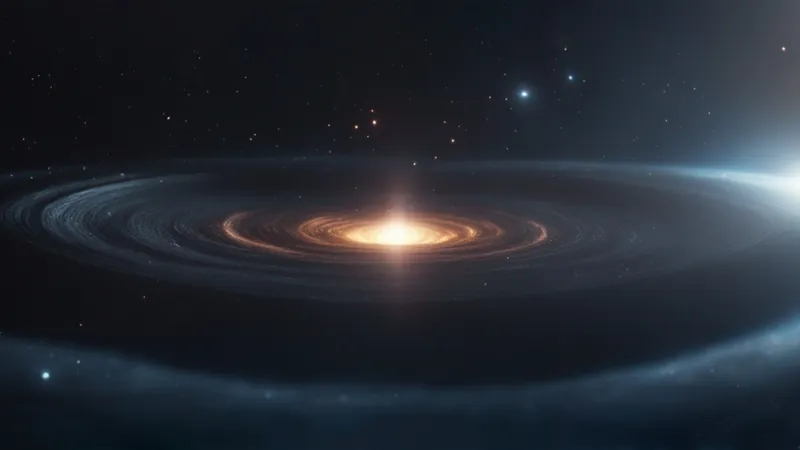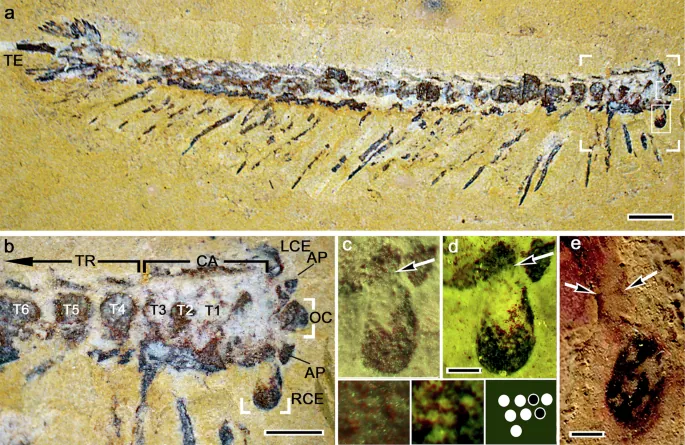
Unlocking the Universe's Secrets: Are We Close to Detecting Big Bang Ripples?
2025-08-28
Author: Rajesh
A Cosmic Symphony from the Dawn of Time
In the explosive early moments of the Big Bang, our entire universe trembled, sending out ripples that resonate even today. These cosmic vibrations, if detected, could radically transform our understanding of the universe as we know it.
Einstein's Bold Revelation
Back in 1916, Albert Einstein predicted the existence of gravitational waves—tiny ripples in space-time created by moving masses. Initially, he believed that these waves would be undetectable, as gravity is the weakest of the fundamental forces.
A Breakthrough Nearly a Century Later
Fast forward to 2015, when a dedicated group of physicists achieved what Einstein thought impossible. After 25 years of labor, they successfully detected gravitational waves for the first time using the Laser Interferometer Gravitational Wave Observatory (LIGO), proving that merging black holes indeed send shockwaves through the fabric of space.
The Power of Gravitational Waves
When black holes collide, they release an astounding amount of energy—equivalent to the mass of the sun transformed into pure energy—yet this force remains invisible, taking form solely as gravitational waves that can tear apart anything in their vicinity.
A Glimpse Into Inflation
Astrophysicists theorize that during the fleeting moments of the Big Bang, a process called inflation caused the universe to expand exponentially. This cataclysmic growth left us with imprints—a cosmic microwave background that hints at the very inception of the universe.
The Search for Primordial Waves
Despite having hints of inflation, we still lack a direct insight. Remarkably, inflation didn’t just leave a faint trace; it unleashed formidable gravitational waves that are now gently rippling across Earth, although weakened over billions of years.
Next-Gen Observatories to the Rescue!
Current detectors like LIGO catch sharp vibrations from black hole mergers, but the longer wavelengths of primordial gravitational waves remain elusive, hidden beneath the noise of our planet. Enter the upcoming Laser Interferometer Space Antenna (LISA), set to launch in the mid-2030s, which will employ a constellation of satellites to detect these elusive waves.
Beyond LISA: The Future of Cosmic Exploration
Scientists are already dreaming about a successor to LISA known as the Big Bang Observer (BBO). Featuring a network of advanced spacecraft, the BBO aims to capture a wider variety of primordial gravitational waves. However, its realization is still just a proposal without concrete plans.
A Transformative Future Awaits
As all eyes turn to LISA, the hope is that it will provide unprecedented insights into the universe's inception and the mechanics of inflation. This groundbreaking exploration promises not only to unveil the mysteries of our origins but could very well inspire further cosmic revelations unlike anything we have ever witnessed.



 Brasil (PT)
Brasil (PT)
 Canada (EN)
Canada (EN)
 Chile (ES)
Chile (ES)
 Česko (CS)
Česko (CS)
 대한민국 (KO)
대한민국 (KO)
 España (ES)
España (ES)
 France (FR)
France (FR)
 Hong Kong (EN)
Hong Kong (EN)
 Italia (IT)
Italia (IT)
 日本 (JA)
日本 (JA)
 Magyarország (HU)
Magyarország (HU)
 Norge (NO)
Norge (NO)
 Polska (PL)
Polska (PL)
 Schweiz (DE)
Schweiz (DE)
 Singapore (EN)
Singapore (EN)
 Sverige (SV)
Sverige (SV)
 Suomi (FI)
Suomi (FI)
 Türkiye (TR)
Türkiye (TR)
 الإمارات العربية المتحدة (AR)
الإمارات العربية المتحدة (AR)